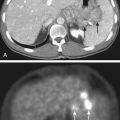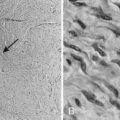63 Plasma Cell Tumors
Multiple Myeloma And Solitary Plasmacytoma
Epidemiology
Multiple myeloma is the second most common hematologic malignancy. In the United States, myeloma caused an estimated 19,900 new cases and 10,700 deaths in 2008.1 Myeloma is slightly more common in men than women, and the incidence of myeloma in African Americans is almost twice that of Whites. The median age at diagnosis is between 65 and 70 years. Solitary plasmacytomas tend to occur in younger, male patients.
Etiology
The cause of multiple myeloma is unknown. Exposure to radiation, petroleum products, organic solvents, pesticides, and herbicides may have a role, and tobacco use, obesity, diet, and exercise may also affect risk.2 Chronic immune stimulation by autoimmune or infectious disorders is associated with an increased likelihood of developing myeloma.3 The role of inherited factors is uncertain, although myeloma has been reported in multiple family members.4
Genetics
Chromosomal abnormalities are critical predictors of survival in myeloma.5 Conventional metaphase cytogenetics often fails to identify chromosomal changes, likely because of the low proliferative rate of plasma cells, but more sensitive techniques have identified chromosomal abnormalities in nearly all patients.6 Clinically, fluorescence in situ hybridization (FISH) is utilized in conjunction with conventional cytogenetics to identify abnormalities.
Deletions of chromosomes 13 and 17p have been associated with poor prognosis. Del(13), particularly monosomy 13 or del(13q14), occurs in nearly half of patients with myeloma, but the target gene or genes have not been identified. Detection of del(13) by conventional cytogenetics may have a worse prognosis than identification by FISH.7 Deletion of 17p occurs in 10% of patients with myeloma, and the putative target is the p53 tumor suppressor gene at the 17p13 locus. Del(17p) is associated with an aggressive clinical presentation and very poor outcome. Abnormalities of chromosome 1 are less common but also portend a worse prognosis.8 In contrast, hyperdiploidy is associated with a better prognosis but may not be an independent prognostic factor.5
Diagnosis
The International Myeloma Working Group definition of symptomatic myeloma requires three findings: clonal plasma cells in the bone marrow or a plasmacytoma; detectable monoclonal protein in the serum or urine; and evidence of related end organ impairment.9 This simplified triad for diagnosis has replaced the more complicated Durie–Salmon system. An acronym for the common findings of end organ damage is CRAB (hyperCalcemia, Renal impairment, Anemia, Bone lesions), although recurrent infections, other cytopenias, amyloidosis, and neurologic findings would also be evidence of impairment. As long as end organ damage is present, any detectable level of clonal plasma cells and monoclonal protein are acceptable. The types of M protein produced are IgG (60%), IgA (15%), IgD (2%), IgE (<1%), and light chain only (18%). True nonsecretory myeloma is now extremely rare, as the free light chain assay is abnormal in the majority of cases previously considered “nonsecretory.” Plasma cell leukemia is a variant of multiple myeloma with circulating neoplastic cells and is associated with a particularly poor prognosis.
Monoclonal gammopathy of undetermined significance (MGUS), asymptomatic (smoldering) myeloma, and primary light chain amyloidosis are disorders related to multiple myeloma. MGUS and smoldering myeloma do not have end organ impairment, and this is the key feature that distinguishes them from multiple myeloma. Asymptomatic myeloma has a higher M protein (≥3 g/dL) or bone marrow plasma cell content (≥10%) than MGUS. Both MGUS and asymptomatic myeloma can progress to multiple myeloma, and asymptomatic myeloma has a worse prognosis than MGUS. Overall, there is a 1% risk per year of progression from MGUS to multiple myeloma, and risk factors for progression include a M protein ≥1.5 g/dL, an abnormal free light chain ratio, and a non-IgG isotype.10 Half of patients with asymptomatic myeloma will develop active multiple myeloma within 5 years. An increased percentage of bone marrow plasma cells, a higher serum M protein, and an abnormal free light chain ratio are risk factors for progression in smoldering myeloma.11,12 Primary light chain amyloidosis can be a manifestation of end organ damage in multiple myeloma. However, many patients with primary light chain amyloidosis do not meet the criteria for myeloma, because of the absence of an identifiable clonal plasma cell population or an undetectable M protein.
Staging System and Response Criteria
A simplified international staging system has also replaced the more complicated Durie–Salmon staging system. The older Durie–Salmon staging system correlated with total tumor mass but did not predict prognosis or survival well. In contrast, the international staging system at diagnosis is predictive of survival, not tumor mass, and is based only on the serum albumin and beta2-microglobulin.13 Patients with stage 1 disease have a normal beta2-microglobulin (<3.5 mg/dL) and normal serum albumin (≥3.5 g/dL), and those with stage 3 disease have a beta2-microglobulin ≥5.5 mg/L. All other patients have stage 2 disease. Beta2-microglobulin is cleared by the kidneys, so patients with renal insufficiency typically have a higher stage at diagnosis.
International uniform response criteria for multiple myeloma have been developed to reflect the better outcomes attainable with newer therapies.14 A complete response (CR) is defined as negative immunofixation in the serum and urine, disappearance of any plasmacytomas, and ≤5% plasma cells in the bone marrow. A strict CR (sCR) also requires a normal free light chain ratio and absence of clonal cells by immunohistochemistry or flow cytometry. A very good partial response (VGPR) is defined as a ≥90% reduction in measurable serum M protein plus urine M protein <100 mg/24 hr. A partial response (PR) is defined as ≥50% reduction in serum M protein and ≥90% reduction in urine M protein. Patients who achieve a VGPR or better in response to therapy have a significantly improved survival compared to those who reach only a PR.
Systemic Therapies
The major classes of drugs active in myeloma are glucocorticoids, alkylators, immunomodulatory agents, and proteasome inhibitors. The newer immunomodulatory agents and proteasome inhibitors have markedly changed the therapy and survival of patients with myeloma. Thalidomide, an immunomodulatory agent, and lenalidomide, a more potent derivative, both target the microenvironment of the plasma cell by inhibiting stromal interactions, suppressing angiogenesis, and stimulating immune function. They may also have direct antiproliferative effects on the plasma cell. Bortezomib, a proteasome inhibitor, induces apoptosis in neoplastic plasma cells and also affects the microenvironment. The immunomodulatory agents are renally cleared, so bortezomib is often preferentially used in patients with significant renal insufficiency. Anthracyclines, topoisomerase inhibitors, vinca alkaloids, and platinum compounds are also utilized in combination therapy. Several other classes of drugs are in development, particularly chaperone (Hsp90) inhibitors, histone deacetylase inhibitors, and kinase inhibitors.15 Agents from different classes are typically combined for optimum effect. Frequently utilized combinations include: melphalan, prednisone, thalidomide (MPT); melphalan, prednisone, bortezomib (MPV); lenalidomide and dexamethasone; thalidomide and dexamethasone; bortezomib and dexamethasone; bortezomib and liposomal doxorubicin; and bortezomib, dexamethasone, thalidomide (VDT). Before the newer agents, vincristine, doxorubicin, dexamethasone (VAD) and melphalan and prednisone (MP) were common regimens. Many other combinations are also under investigation.
Combination induction regimens incorporating novel agents in newly diagnosed patients have reported overall response rates of 70% to 90% with quality responses (VGPR or better) in the 20% to 40% range.16–21 This compares favorably to the 40% overall response rate with few quality responses seen with melphalan and prednisone, which was the standard of care until recently for patients who were not transplant eligible. Although more aggressive combinations of conventional chemotherapy are not more effective than melphalan and prednisone,22 the addition of thalidomide to MP markedly improved response rates, response quality, and survival in phase 3 trials.16,19 The optimal induction therapy for newly diagnosed patients who are transplant candidates is under investigation, although agents that damage marrow reserve, such as melphalan, should be avoided before stem cell collection. Typically, transplant eligible patients now receive a bortezomib- or lenalidomide-based induction regimen.
The role of transplant in myeloma is changing due to the improvement in outcomes seen with the newer agents. Compared to conventional chemotherapy, high dose melphalan with autologous stem cell support improves survival by 1 to 2 years but is not curative.23,24 Patients who do not achieve at least a VGPR may benefit from a second autologous transplant.25,26 The value of allogeneic grafts is controversial, as studies have produced conflicting results.27,28
Stay updated, free articles. Join our Telegram channel

Full access? Get Clinical Tree







